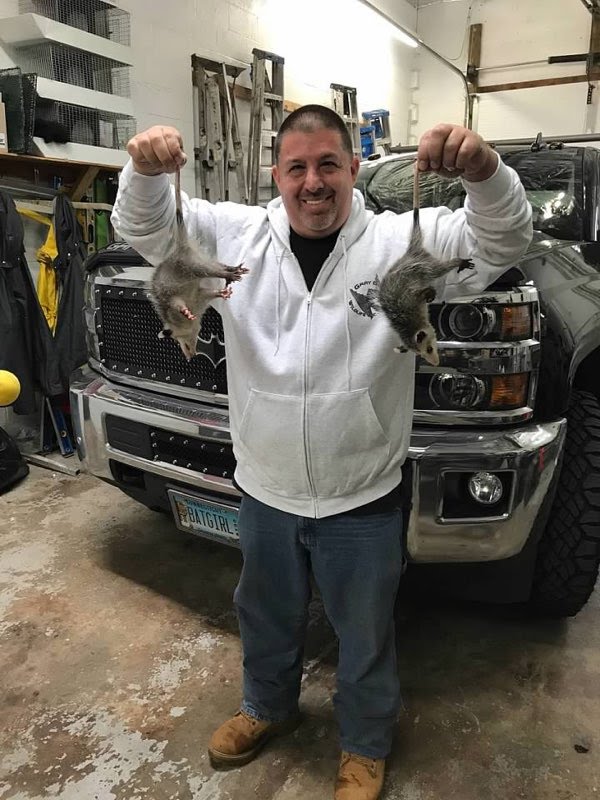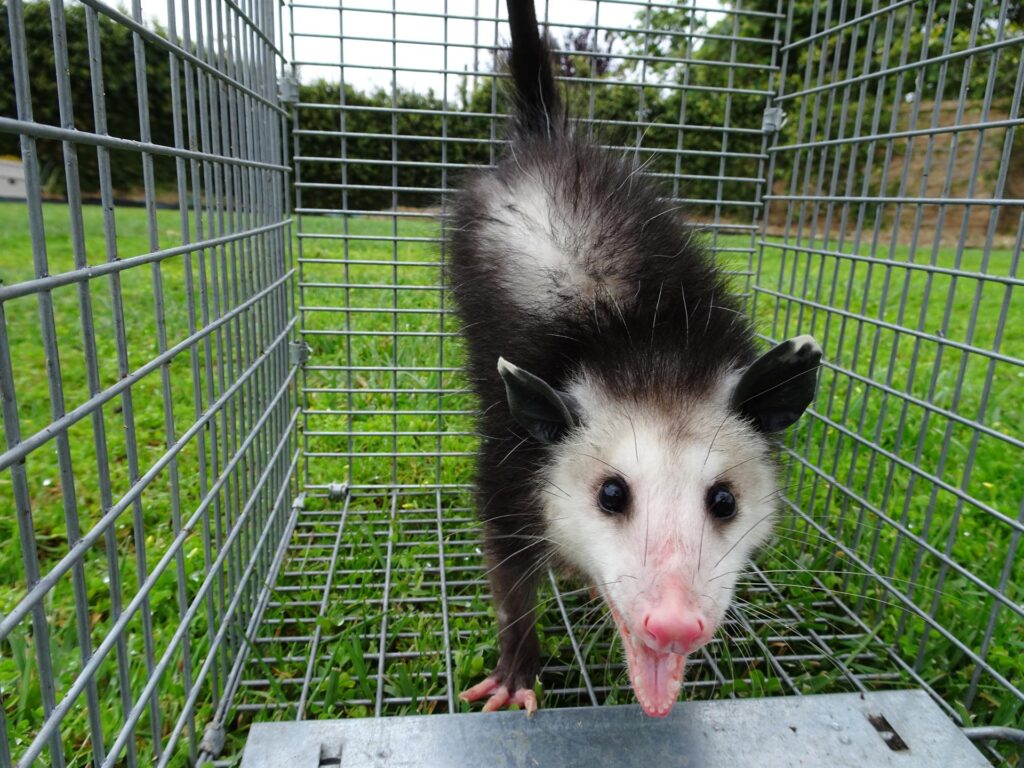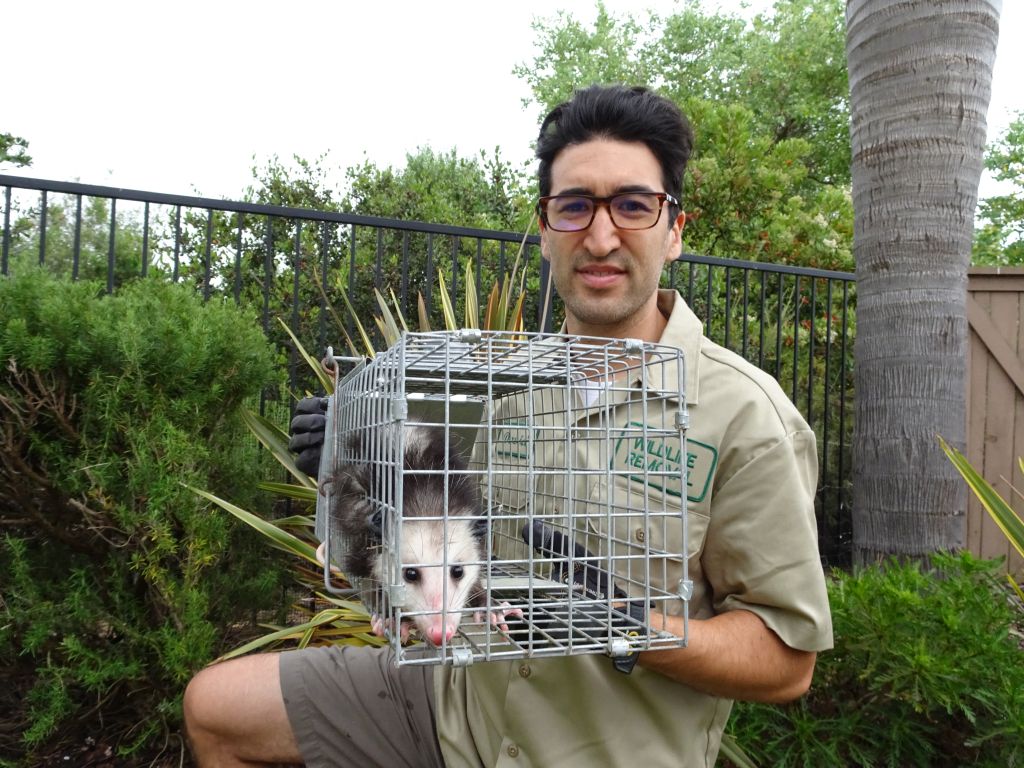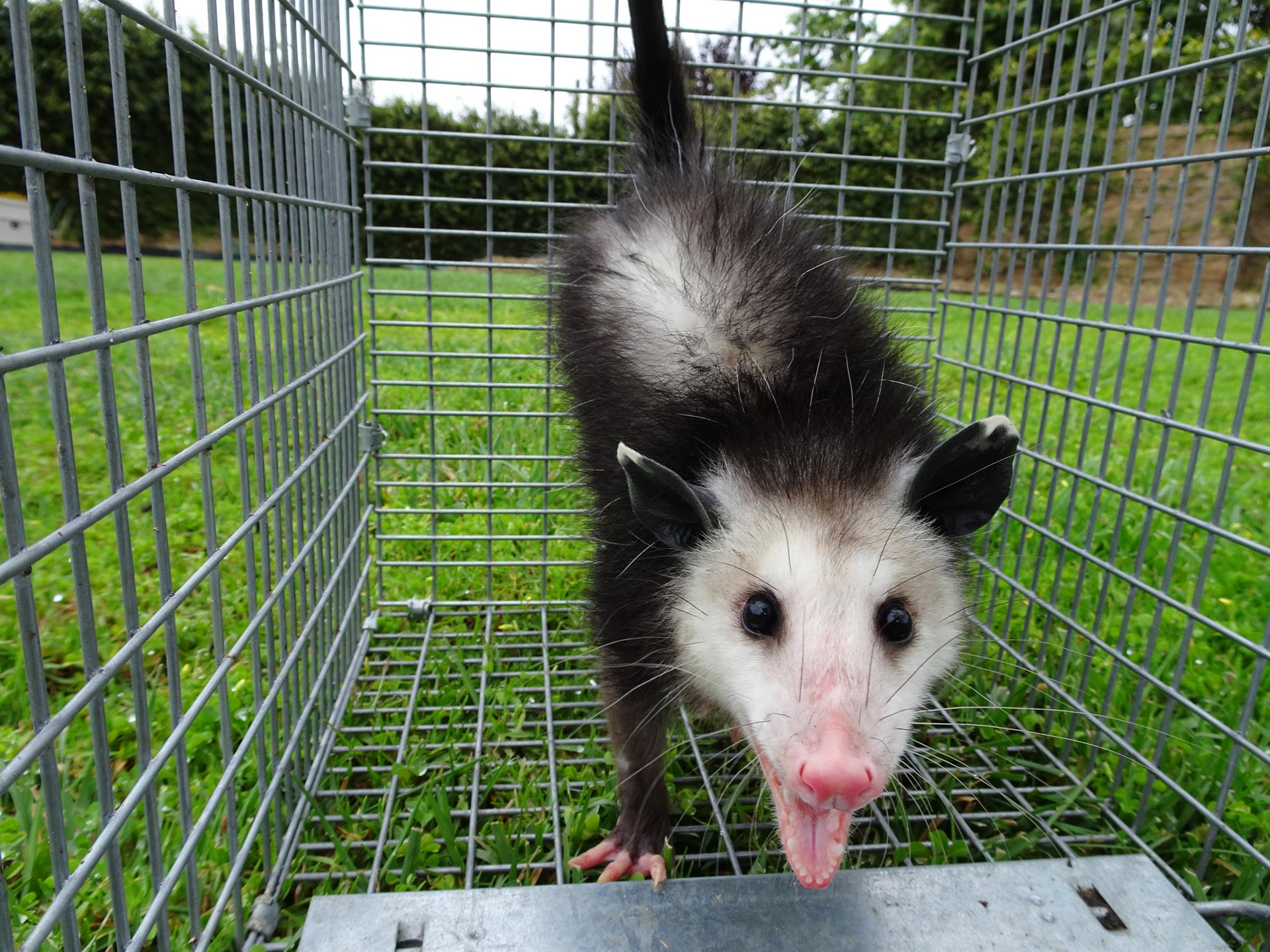Opossum Removal
Opossum Removal
While “opossums” and “possums” are often used interchangeably, the two terms reflect different animals. Opossums are found in North America, and are likely what you might be thinking of when you say “possum.” True possums, on the other hand, are found in Australia and look more like chinchillas than American opossums. If you have an opossum in or around your property, give Gray Brothers Wildlife LLC a call and we’ll take care of it.

About opossums
Opossums are very common in the Connecticut area. They are the only marsupial that naturally resides in the United States, and they typically live in a variety of habitats including wooded areas and farmland. Opossums are nocturnal by nature, but they do not hibernate and can be found year-round.
Opossum habits
Opossums are scavengers and, like raccoons, commonly raid garbage cans and dumpsters near residential properties. They’ll eat just about anything, but they most commonly eat vegetation, nuts and fruit, insects, and even larger animals like mice and sometimes chickens. The phrase “playing possum” refers to the way opossums flop onto their backs and appear dead when they’re threatened by larger predators, although this phrase contributes to the confusion between opossums and possums.
Possums have around a dozen babies in a single litter, and the gestation period is only 13 days. This means that a small opossum problem can quickly become a very large opossum problem if you don’t take care of it right away.
Opossum damage
Opossums have opposable thumbs, which helps them to enter areas in your home that other pests wouldn’t be able to access. They’ve been known to tamper with windows and vents, navigate holes and small openings, and enter crawl spaces. As mentioned above, opossums also often raid trash cans and dumpsters and can repeatedly drag trash across your property as they scavenge for food.
Opossums also carry a variety of diseases, including leptospirosis, tuberculosis, and trichomoniasis, in addition to potential infestations with fleas, ticks, and lice. In other words, opossums can transfer a wide variety of problems to humans and especially other animals that may come in contact with them.




Our opossum removal process

We’ll begin our removal process with a thorough inspection of your home (or commercial building) and the surrounding area. Our goal is to identify any and all potential entry points so that we can later seal them off.
Once we’ve located all of the potential entry points, we’ll either trap and remove the opossums or seal off all but one entry point to force the opossums out. We’ll also make sure to address any food sources that may be lingering in your space to improve the odds of success long-term. It’s important to try to secure your trash to keep from attracting the opossums back in the future. If there were any dead opossums left behind, we’ll take care of that removal process as well.
Our final step will be cleanup, including removing any opossum droppings that may be left in your space. This step is important to prevent any contaminants from spreading disease.
Rest assured that our entire process is designed to be both effective and humane for the animal involved, exactly how you find at opossumpestcontrol.com. Our state-of-the-art technology, including drones, field cameras, borescopes, and thermal imaging allows us to gain a more thorough understanding of the problem before we begin, helping to ensure success and a smooth process for everyone involved. From start to finish, we carefully follow all applicable laws and regulations that govern the opossums’ removal.

How To Trap An Opossum
Opossums tend to get a bit of a bad rep. We look at them as these gnarly, unwanted house guests that upend your garden, and mess up your attic. And that’s true, largely, but we have to remember that the reason why opossums are coming to human dwellings in the first place is that they’re just looking for a bit of food and shelter, just like anyone else.
That’s why we at Gray Brothers Wildlife recommend live trapping, as well as other humane exclusion methods, to those clients looking to trap a bothersome possum. In this article, we’ll take you through the process step by step, so that you can catch the animal safely and humanely.
Settle on the kind of trap you want.
Live traps come in various shapes and sizes, with one or multiple doors that will shut once the opossum is inside. There are many specialty stores that sell such traps, and you’re quite likely to find what you’re looking for.
Set the trap along the animal’s natural path.
Your best bet for capturing the opossum is to place the trap along its natural path, so as to maximize the chances of it running into the trap. So you should identify the opossum’s usual path when it goes to collect food or water and set the trap there.
Alternatively, if you’re unsure where that is, you could set up the live trap in the area of the house the opossum is causing the most amount of damage since clearly, that’s a place the animal is visiting fairly regularly.
Live traps work much in the same way as traditional traps, in the sense that they employ some sort of bait to lure the animal within. Usually, canned pet food makes for excellent opossum bait, as do several types of fish. Make sure that you follow the instructions laid out by the manufacturer, to maximize your chances for success.
Check on your trap.
If you opt for a live trap, we recommend that you check on it fairly regularly. Leaving an animal trapped, frightened, and without nourishment for hours on end is cruel and unnecessary. So what you want to do is check at least twice a day, in the morning and in the evening, to be able to deal with the animal in a time-efficient manner.
Release the opossum several miles away.
That’s the next step in the live trapping process – releasing the opossum in an area where it can’t bother you or anyone else. Remember that you should look for an area where the opossum won’t have easy access to other people’s properties, since you’d just be setting up a problem for somebody else and that wouldn’t be very nice.
Clean and fix your property.
Once the opossum is safely off your property, you need to deal with the damage. You’ll want to identify the opossum’s entry point, and seal it promptly, to prevent other animals from coming in. you’ll also want to deal with the mess (e.g. furniture damage, waste, etc.), to minimize your exposure to bacteria. Make sure that you wear appropriate protective equipment, such as rubber gloves, when cleaning up the opossum mess.
When in doubt, call a professional!
A professional wildlife removal company like Gray Brothers Wildlife will remove the bothersome animal from your property, deal with the mess it leaves behind, and advise you on thorough methods of prevention for the future. So if you feel the above trapping process is too complicated for you, then do not hesitate to call in a professional wildlife removal company!
How to Remove an Opossum from Under the Porch?
Opossums are considered to be generally non-aggressive animals. However, the presence of these small animals inside a house can create unhealthy conditions. In addition, when one of them gets sick, they can become really aggressive.
It is quite easy to detect if a possum is hanging around your porch. You just have to pay attention to each of the signs they leave in their wake.
If you notice that many of the wires are gnawed, you find nests in tight places, droppings are present, or worse; if your chickens, eggs, and fruit are missing. Probably this small animal is invading your house.
There are several methods to get rid of them. These solutions range from making spaces unattractive to them to installing traps, capturing them, and then releasing them.
Join me to learn about some solutions to get an opossum out of your yard.
4 Effective methods to get rid of an opossum in your yard.
- Chase away the opossum:
Using strong scents is a simple and effective method to chase away a possum from your garden. Ammonia has a characteristic scent that makes opossums flee quickly.
In case you opt for ammonia, you should pour a small amount in a can, then place a rag inside and take out a small end through the hole. The rag will act as a kind of dispenser for the ammonia vapors. When you have your container ready, place it in those areas where opossums frequent.
- Eliminate any access to food.
Try not to feed opossums unwittingly. Opossums are often tempted by any garden where there is any kind of food in plain sight.
That is to say, if there are food leftovers, you will always have these little animals nearby. So it is necessary to eliminate all those food sources. In this way, your garden will become much less attractive for them.
- Trap and release the opossum:
If you find that the opossum is already living in your house, you will most likely have to chase it away. You can do this by using a live trap, which you can get in stores or online. This type of cage will trap the small animal without harming or killing it.
Setting up and baiting the trap is really easy. All you have to do is follow the manufacturer’s instructions. It is best to install it close to where you suspect the burrow is located, or any other area that has been damaged.
Watch the trap continuously to know when the animal has been caught. Once you capture the opossum, immediately move the cage to a quiet place and cover it with a blanket until you are ready to release it.
When it is time to release it, you must be very cautious. In case you do not feel ready, the best thing to do is to call a wildlife professional. When releasing the animal, make sure the opening is directed to the place you want it to escape. Stand at the opposite end of the door, tap the cage lightly with your foot until the animal comes out.
- Don’t let opossums into your home:
To prevent possums from entering your home, it is necessary to seal off any open entries. These little animals will always be looking for a warm home or free food. So these spaces can be very conspicuous. Cover vents and chimneys with screens to prevent opossums from nesting in these places.
Always try to cut back tree branches a little. Opossums could jump onto roofs through the branches located nearby. Therefore, it is necessary to prune branches at least 1.5 m away from the roof.
Remember, opossums in their natural habitat do not represent any danger, on the contrary, they are species that help to balance the ecosystem. This is why it is important to set it free if you find one at home.
Wildlife Services



